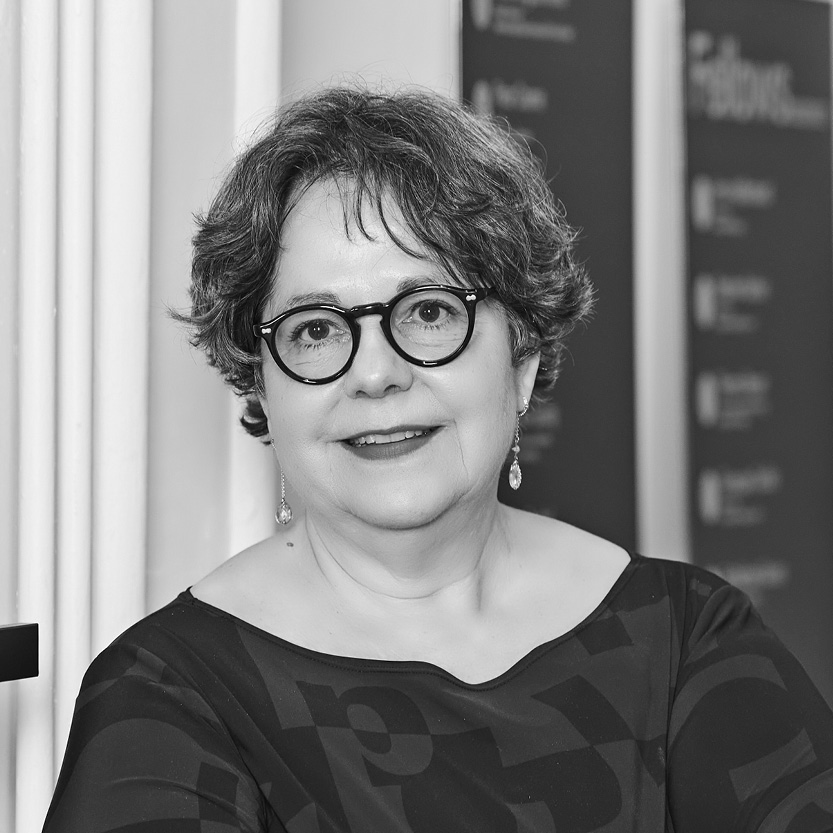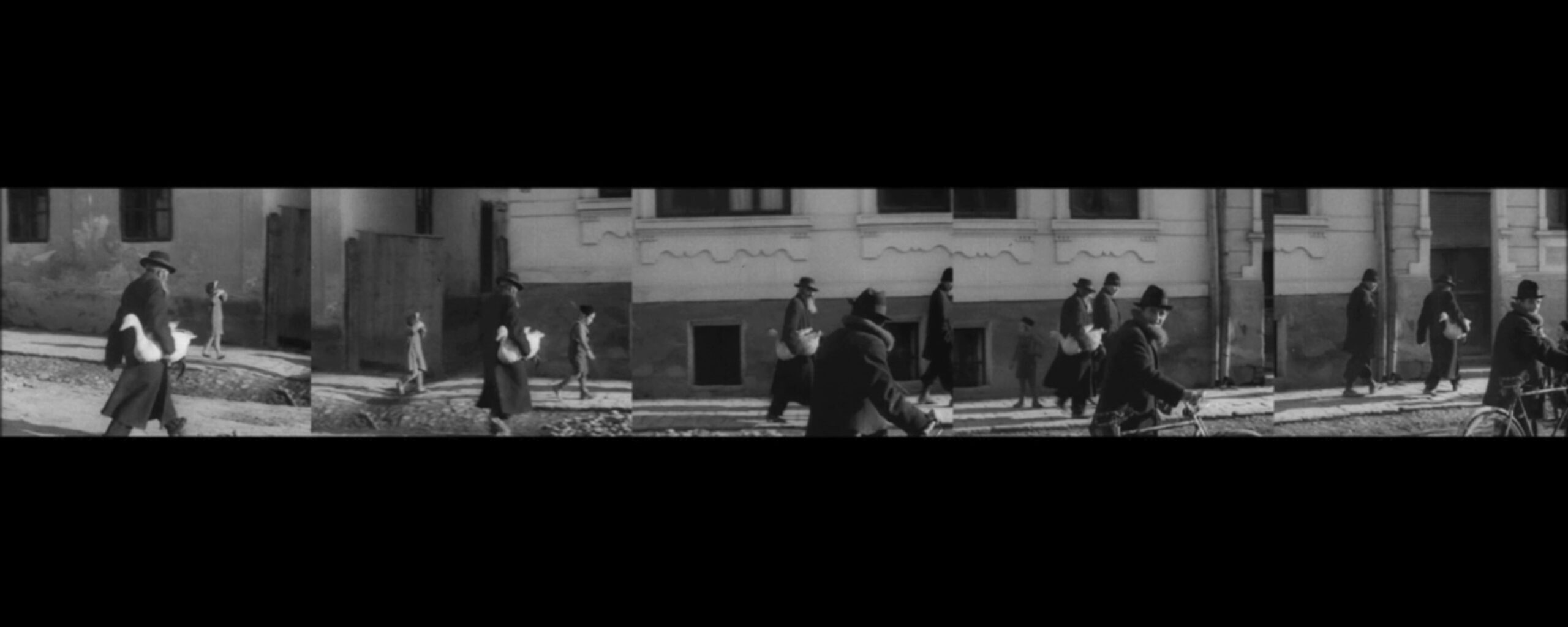
Elisabeth
Bronfen
Haunting Journey
into the Past: Ydessa
Hendeles and her
«Grand Hotel» in
Venice
Issue #02 — Transforming Environments
Midway through my stay at the HIAS I took a flight to Venice to see «Grand Hotel» in the Spazio Berlendis, one of the collateral exhibitions at the Biennale. The Polish Canadian artist Ydessa Hendeles had told me about her project during conversations the previous fall and it immediately resonated with my own fascination for my mother’s photo albums.
In them, she had meticulously documented scenes of recreation with my father and their friends that took place in Bavaria in the aftermath of WWII. In Hamburg, I had been walking up and down the Rothenbaumchaussee and the adjacent streets for weeks, stopping over and again at the many Stolpersteine paving the way. Stooping down, so as better to read the names on the brass plates, I couldn’t help but imagine the lives of the Jewish people who used to inhabit these stylish buildings, now reminiscent of the irrevocable destruction of their world. My own journey into a haunted past had already begun and so it made sense to follow Ydessa Hendeles’ personal excursion into the remains of history.
I couldn’t help but imagine the lives of the Jewish people who used to inhabit these stylish buildings, now reminiscent of the irrevocable destruction of their world.
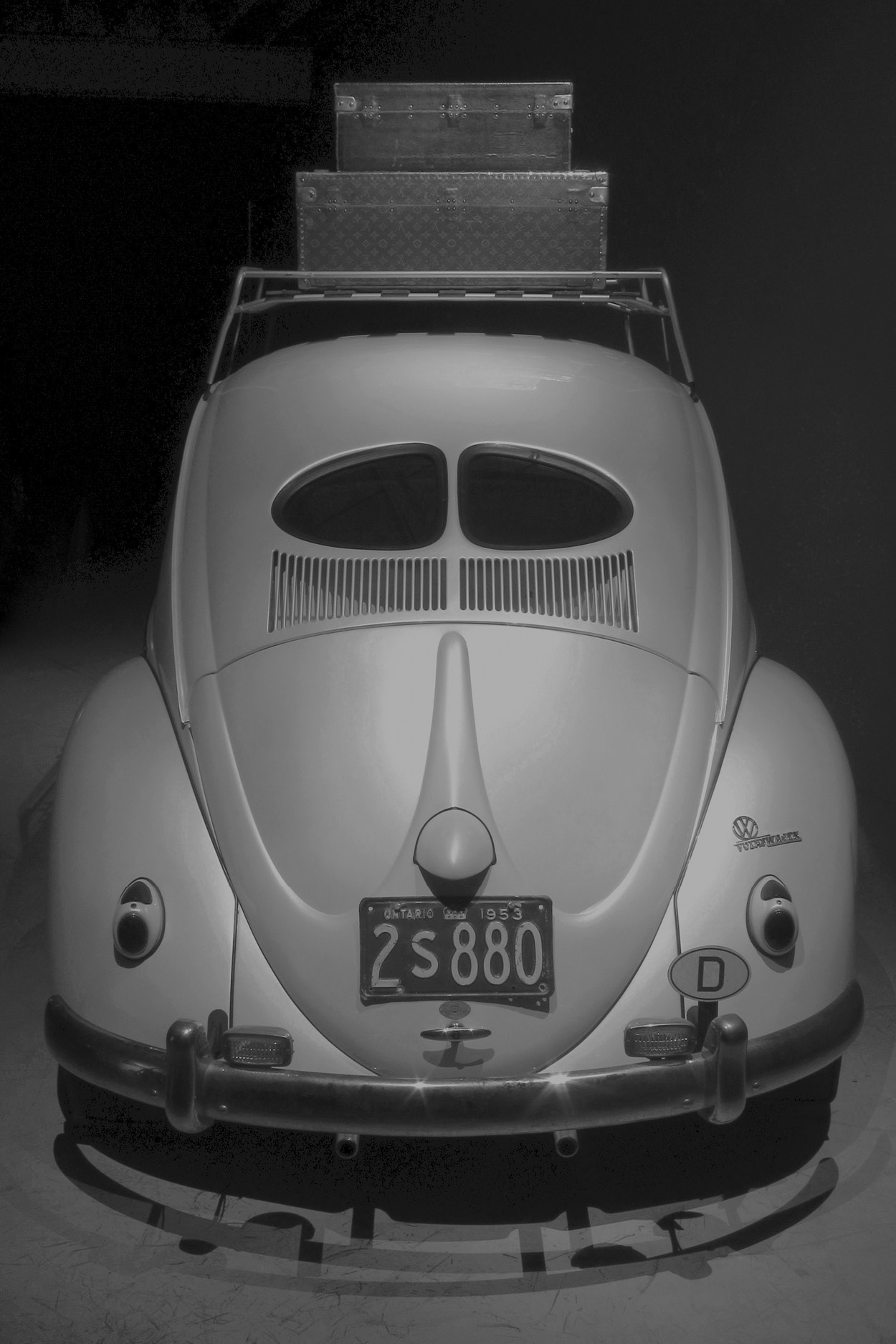
The voyage begins with a black-and-white photograph. It is the point of departure but also the narrative frame for the passage into what the artist calls a «nether space between documentary and fantasy». The photo was taken in the summer of 1946, fifteen months after her parents were liberated from Bergen-Belsen. They are seated on the front bumper of the second-hand 1938 Opel with which they took road trips with family and friends through Hessen and Bavaria until the early 1950s, when they emigrated to Canada. Her mother is holding her pet dog on her lap. The expressions on the faces of the three couples vary. Some are smiling outright; others are simply looking into the camera with the determination of the living. If we take this photo to document that the scene which the camera has captured took place, it also signifies that although they were there they no longer are. Furthermore, the photograph contains an extraordinary moment of survival, a tourist experience against the backdrop of mass destruction, a fragile sense of hope. Yet it contains this scene in another sense as well, controlling and restraining the intensities the image preserves. Only the auto-biographical information Hendeles offers in her notes to «Grand Hotel» allow us to surmise what we don’t see. Her parents are tourists in the summer of 1946, but a few years earlier they were deportees, with a suitcase in hand, going on a journey to a place of ultimate horror. The photograph thus holds my attention both because of what it tells, namely their wish to document their enjoyment of a motoring trip in former enemy territory; but also because of what the freedom of travel they now enjoy screens off.
«Grand Hotel» invites me to take a multi-layered journey into the past. At the end of the corridor where this snapshot is placed, I encounter a painting of Jewish merchants in a small village in Ukraine at the end of the 19th century. Turning to the right, I find myself looking at a brief sequence from found documentary footage, depicting a man carrying a goose under his right arm on a street in Muncacs, Hungary. Two scenes of Jewish life in a world that no longer exists. Turning to the left, my eye is immediately caught by a VW with a pearl paint finish and two pieces of Louis Vuitton luggage on the hood of the car. Ontario 1953 is written on the license plate. To reach it, however, I have to pass by the portrait of the Empress Elizabeta, painted in 1750. A large, pear-shaped baroque pearl is at the center of the elaborate devant de corsage she is wearing; the piece of jewelry pinned to her bodice. This detail holds my attention because Hendeles has paired it with a similar baroque pearl, fashioned into a dog-form pendant, studded with diamonds and rubies. The vitrine in which it is exhibited is meticulously placed to draw out the dialog between these two objects, but also between this jewel and the exquisite Louis Vuitton picnic set, also exhibited in a vitrine, along which I pass on the way to the VW.
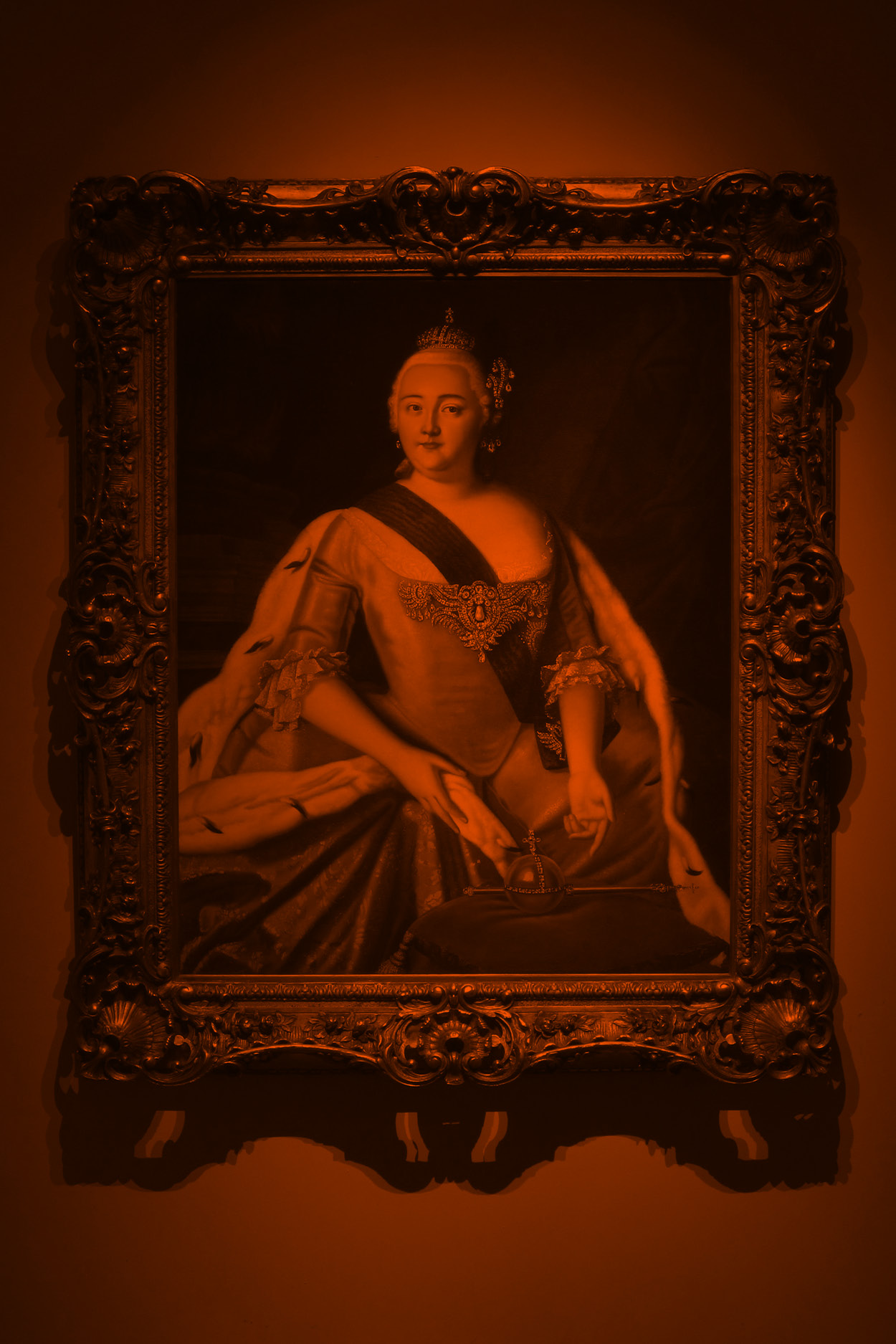
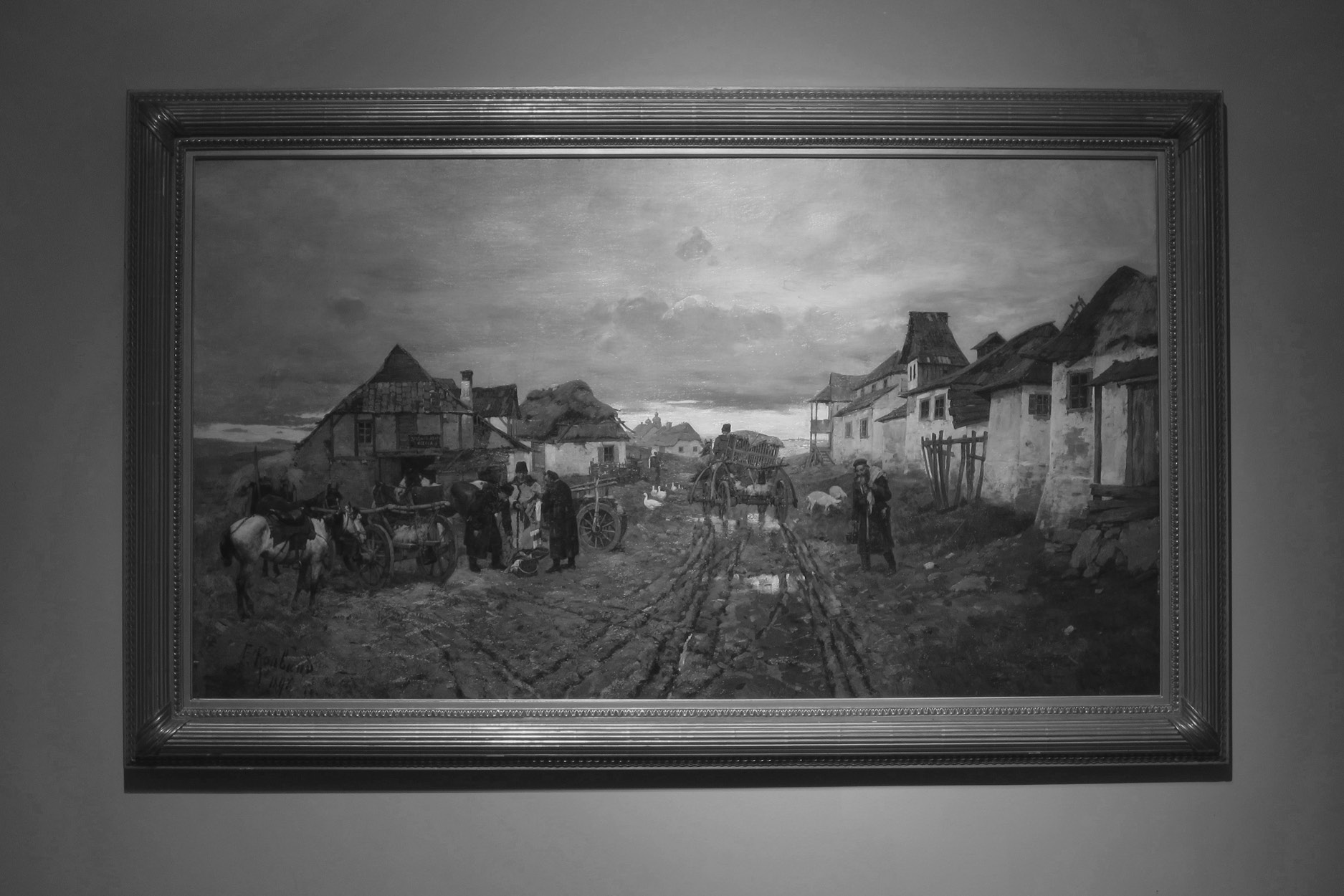
Franz Roubaud (Ukrainian-Russian, born 1856 in Odessa, died 1928 in Munich)
The fantasy world I have stepped into is so perfectly composed that it seems real. What is produced is not a virtual site but a staged world, anchored in historical knowledge, interweaving personal memory with collective historical imagination. A complex network of conversations emerges between worlds that no longer exist and the ambivalent aura surrounding them that remains, drawn out and enhanced by virtue of the curatorial composition of the objects – the Eastern-European Shtetl, the Russian court and the paraphernalia of luxury tourism of the early 20th century. The car in the family snapshot resonates with its pearlized double, the dog with the exquisite jewel. To augment the sense of fantasy, Hendeles is strict regarding the height of the exhibited objects, the color inside the vitrines she designs for them and, above all, the lighting, meant to produce a glamorous glow; but also reflections on the glass and shadows on the wall and the floor. In the way the selected objects are placed in relation to each other, I discern what I have come to call crossmapping. By virtue of visual analogies the objects speak to each other and this dialog, in turn, speaks to me, the spectator. The objects contain intensities and the stories they evoke engender a multi-vocal narrative that I, in turn, am encouraged to further develop for myself.
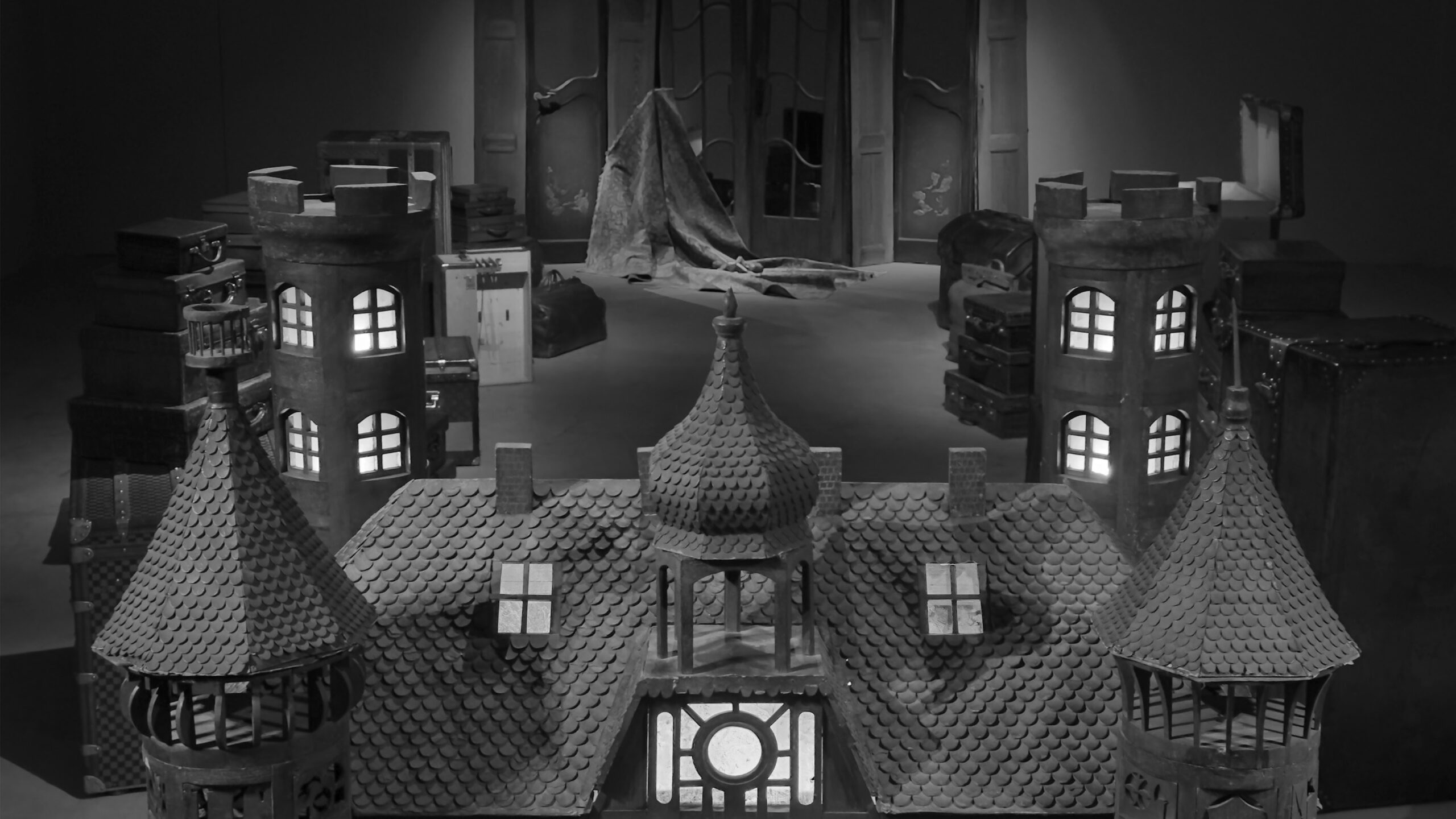
Wood, pressed paper, glass, iron, electric lights
The objects contain intensities and the stories they evoke engender a multi-vocal narrative that I, in turn, am encouraged to further develop for myself.
As I turn away from the VW, I find myself facing an architectural folly of a Grand Hotel which serves as the threshold to the last part of the exhibition – an assemblage of baggage by Louis Vuitton, flanked on the right by a portrait of Nicolas I. of Russia, and on the left, by a portrait of his wife, Empress Alexandra. Each painting, in turn, is accompanied by a collapsible toiletry case, reducing the aristocratic figures to these accoutrements of grand travel. At the end of the cul de sac I find myself standing in front of the boiserie, salvaged from a sale at the Grand Hotel Continental in Munich, when it closed in 1994. A hand-woven silk rug hangs from one of the panels and on it lies a «neonate phantom figure», the wooden manikins used in teaching obstetrics at the beginning of the 20th century. Through these material remains of the past, history remains, tarries with us, appeals to us, asks us to look, to take note of connections between the various scenes. The crossmapping proposes a shifting view, a revisitation of the past that appeals to our capacité imaginaire. We weren’t there, but we can imagine the experiences invoked by the curatorially assembled and composed objects. And because the exhibition space is a cul de sac, when I retrace my steps on my way out, I once again pass by the luggage, the vitrines, the portraits. The manikin and the pearlized VW compel me to reconsider the fragile hope I want to see on the faces of the people in the photograph at the entrance.
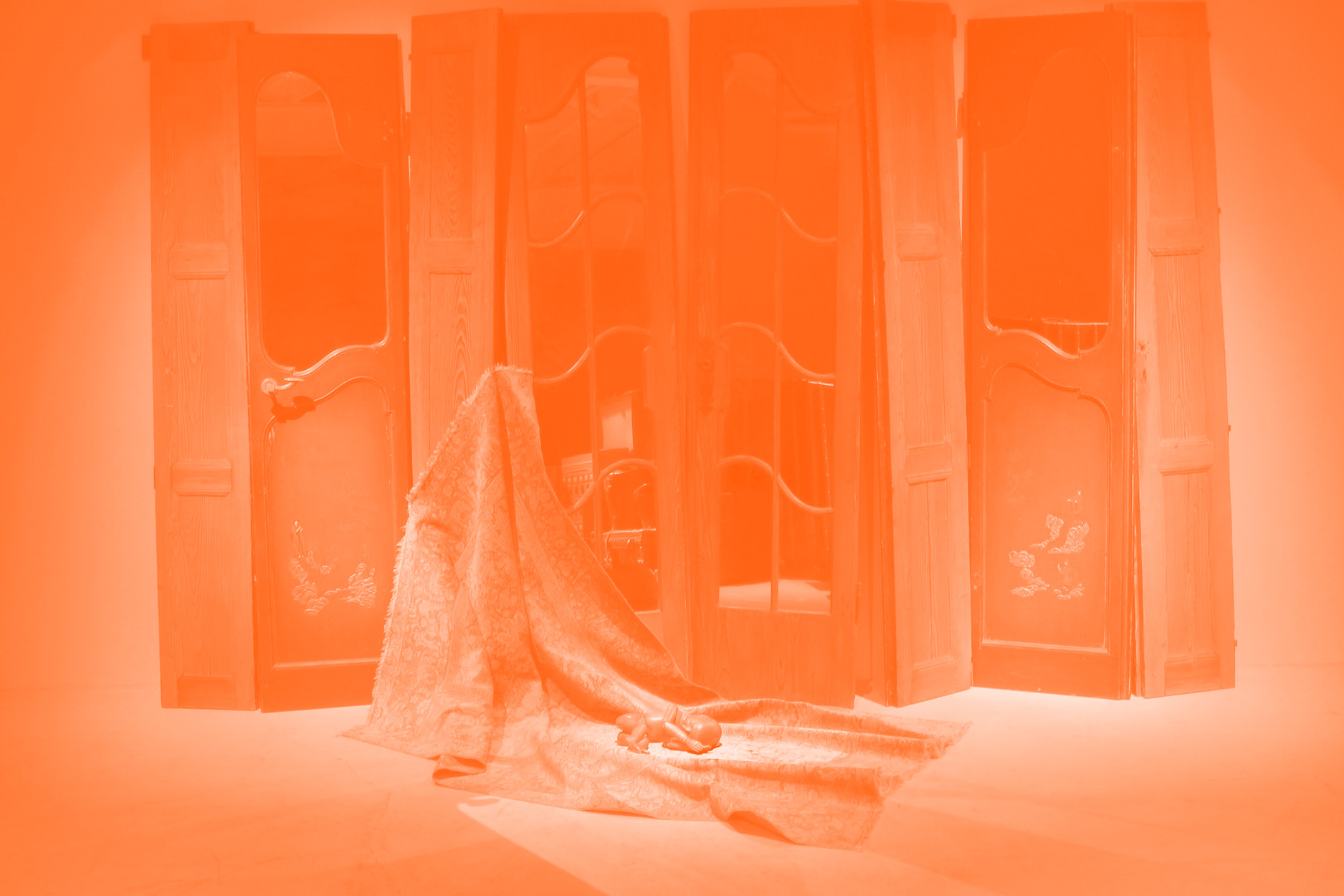
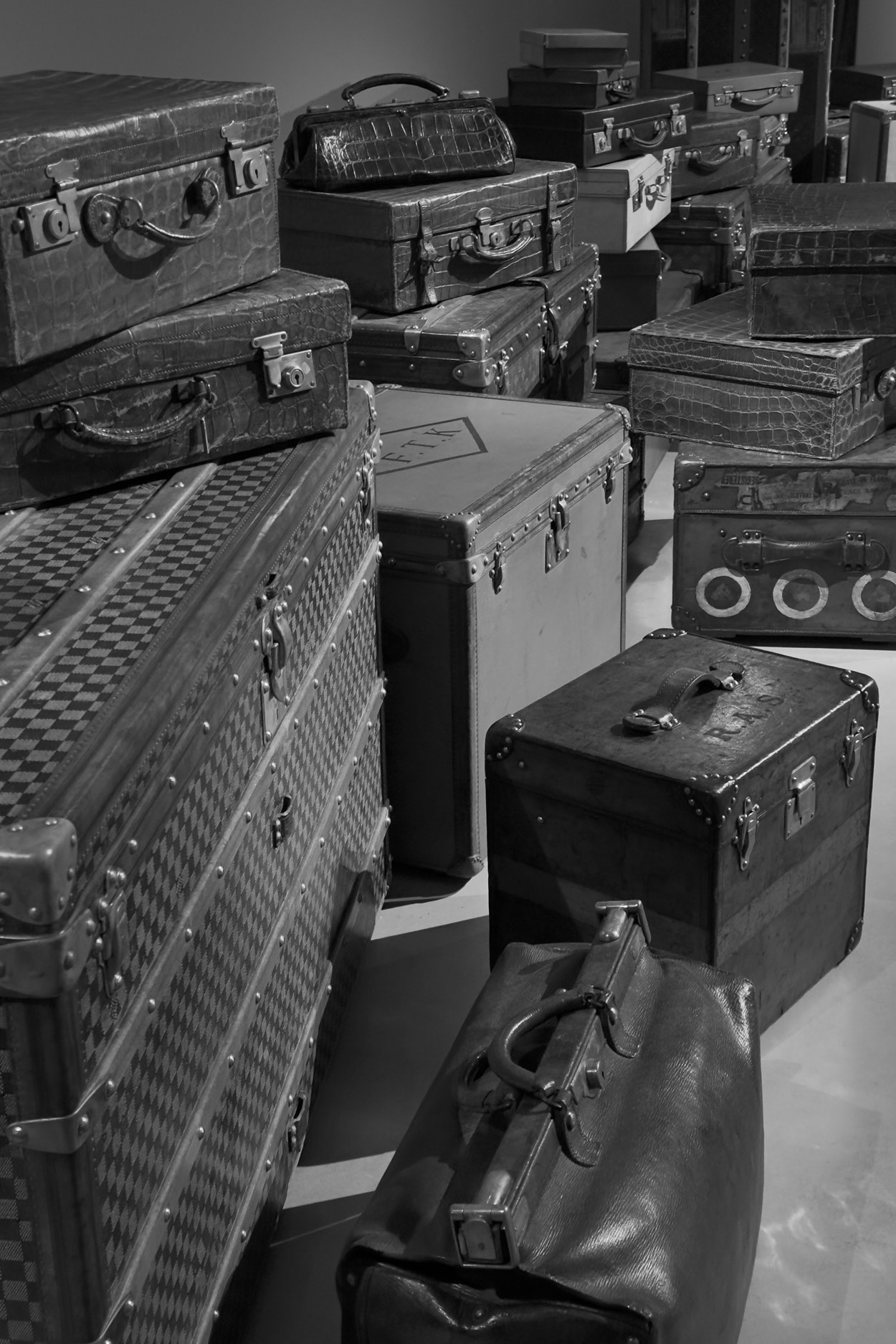
Two films come to mind as my personal frame for this journey into the past. At the end of Grand Hotel, directed by Edmund Goulding in1932, the war veteran, who is a permanent resident, notes: «People come, people go. Nothing ever happens». For us, watching it, however, something did happen. For the duration of the film, this Grand Hotel in Berlin brought together a group of people, whose fate was decided there: A Baron, who, because he has squandered his fortune, has become a petty thief. An accountant, who wants to spend his last days in luxury because he is terminally ill. An industrialist, who expects to close an advantageous deal. His stenographer, who is hoping for a more prosperous future. And a Russian ballerina, who contemplates suicide because her career is waning. Some find love or companionship. Others are murdered or arrested by the police. Some of them might well have arrived with Vuitton luggage. In this 1930s film, the Grand Hotel has become a place where the luxury it affords is not just available to a mixed class of people. The fact that they only temporarily enjoy this home away from home also draws attention to the transitory nature of this elegance.
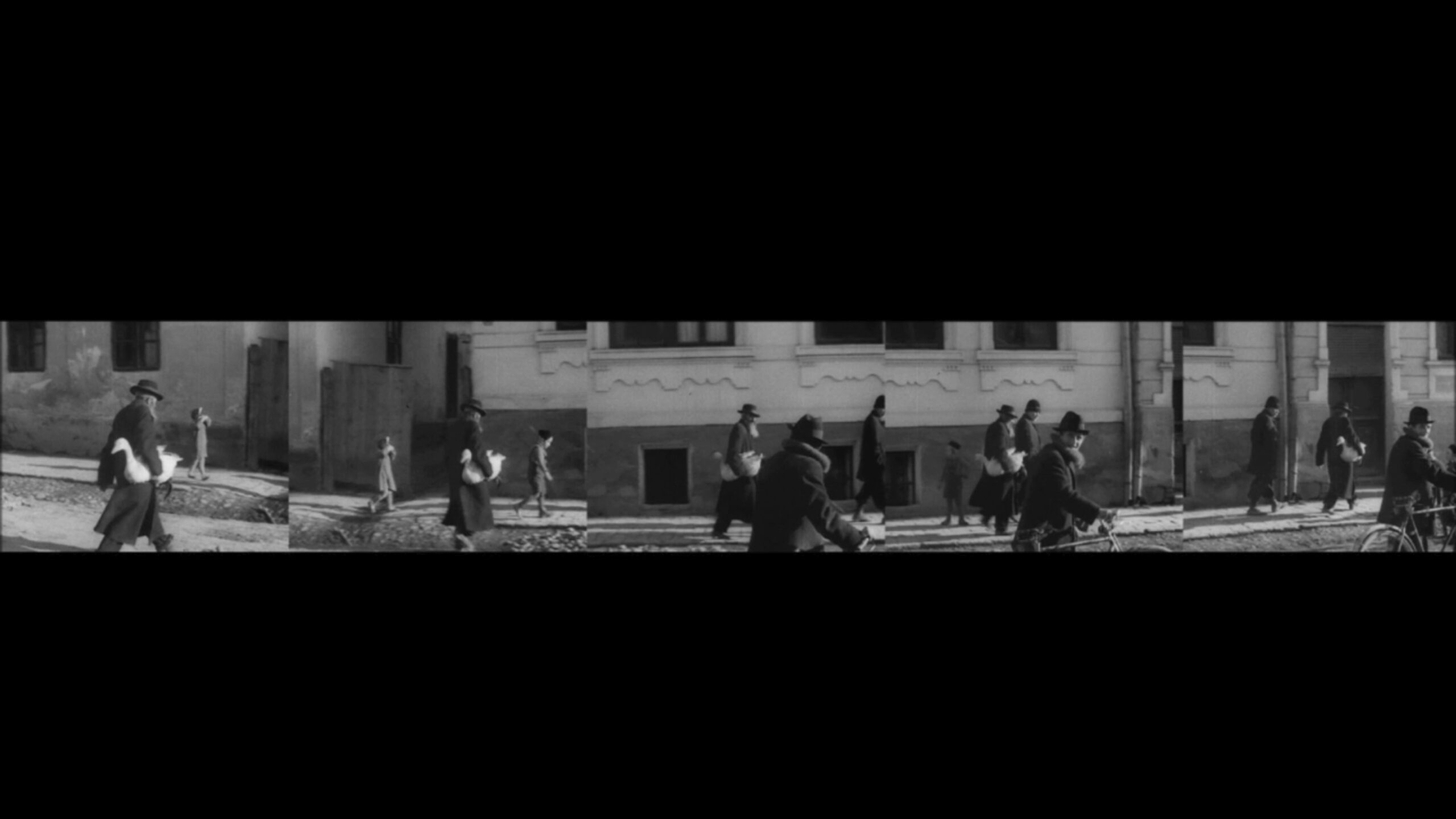
The assemblage of bags becomes uncanny, recalls phantom people, who once used them but are no longer there.
With this film in mind, I notice something else about the pieces of luggage. Stickers of the places the former owner has visited. Exquisitely designed monograms that indicate the initials of a name. But we don’t know who the owners are nor what became of them. The assemblage of bags becomes uncanny, recalls phantom people, who once used them but are no longer there. They signify the remains of a past hovering over them like a spectre. One piece of luggage has many drawers for shoes, another small one has several hangers. As Ydessa Hendeles suggest, it could be the coffin for the baby manikin. The exhibition space recalls a storage room. But it is also the archive for stories. Each piece of luggage is the starting point of an untold narrative about those who used it to transport what they needed on their journey – like the toiletry cases, the nécessaire de voyage, which are coupled with the portraits of Russian royalty. Each piece is a layered symbol – it implies the idea of leisure. But it also serves as the glamorous cover for a different exhibition of suitcases. Those behind glass vitrines in the museum in Auschwitz.
For me, this conceptual crossmapping brings to mind a second film, Zwischen Gestern und Heute, directed by Harald Braun in 1947. It is set in the International Continental in Munich and takes place, as the title suggests, in the liminal time zone between yesterday and tomorrow. Because it works with flashbacks, I see a line of association to Ydessa Hendeles’ «Grand Hotel». In this film, parts of the hotel are still in ruins. A man, who used to frequent the restaurant there, has just returned from his exile in Switzerland. The conversations he has with those who remained in Nazi-Germany evoke flashbacks that dramatize what happened at the hotel on the night it was bombed by the Allies. Scenes from the past emerge out of the rubble, allowing him to reconstruct events around the suicide of a Jewish actress, so as to avoid being arrested by the Gestapo. The film also makes use of speaking objects. The jewels that belonged to her, which have been buried in the stone rubble of the hotel, must be retrieved. As speaking objects, they contain the past, the guilt, the misunderstandings and the responsibility of the people who were with her that night. As in Ydessa Hendeles’ scene making, these flashbacks also produce a double vision. We see the luxury this Grand Hotel once offered through the lens of its subsequent destruction.
The retrospective view produces a narrative that connects what happened in the past with fragile expectations for the future.
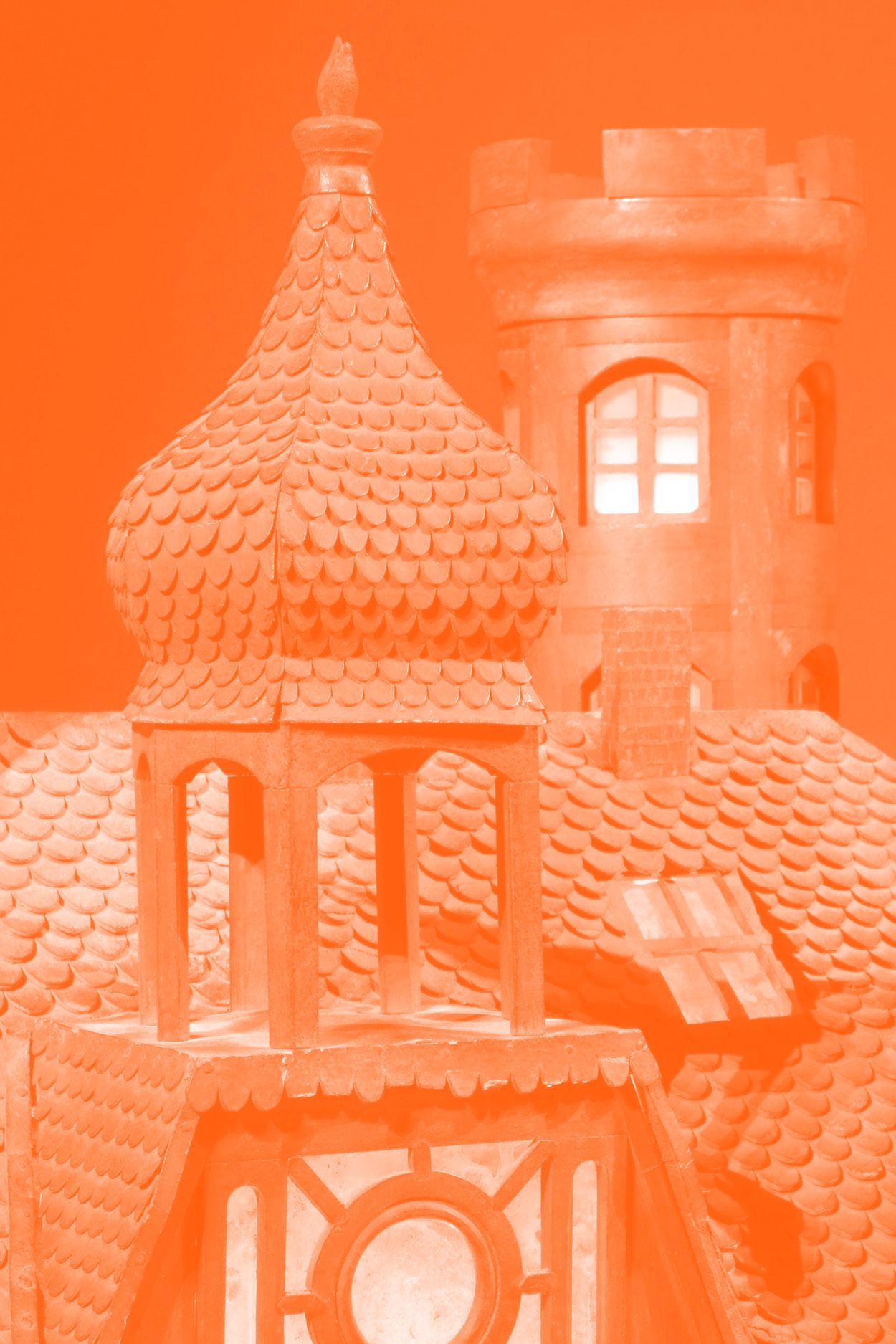
Wood, pressed paper, glass, iron, electric lights
The retrospective view – in the film and in the exhibition – produces a narrative that connects what happened in the past with fragile expectations for the future. Like the jewels that, once found, rehabilitate the man who suddenly disappeared on the night of the bombing, so, too, the baby manikin is conceived by Hendeles as a signifier of promise. In both cases the future, however, is uncertain. What, in turn, is certain, is that what once was continues to haunt us, even though – or precisely because – it no longer is. Sparkling with glamour yet fragile and transitory, a space entitled «Grand Hotel» intertwines three aspects of the remains of history – the dead, the objects that contain intensities of the past, and the memories they continue to invoke in us.
Elisabeth Bronfen
Elisabeth Bronfen is Professor Emerita at the University of Zurich and Global Distinguished Professor at New York University.
Her research is in English, American, and Comparative literature from the 18th century to the present. Her interest in gender studies, cultural analysis, psychoanalysis, visual culture, and intermedia studies includes monographs on the aesthetic representations of feminine death, on hysteria as a form of artistic expression, on the cultural history of the night, on Hollywood genre cinema, on contemporary TV drama as well as on literary and cinematic representations of pandemics. She publishes countless essays for exhibition catalogues, as well as her cooking memories and a novel.
